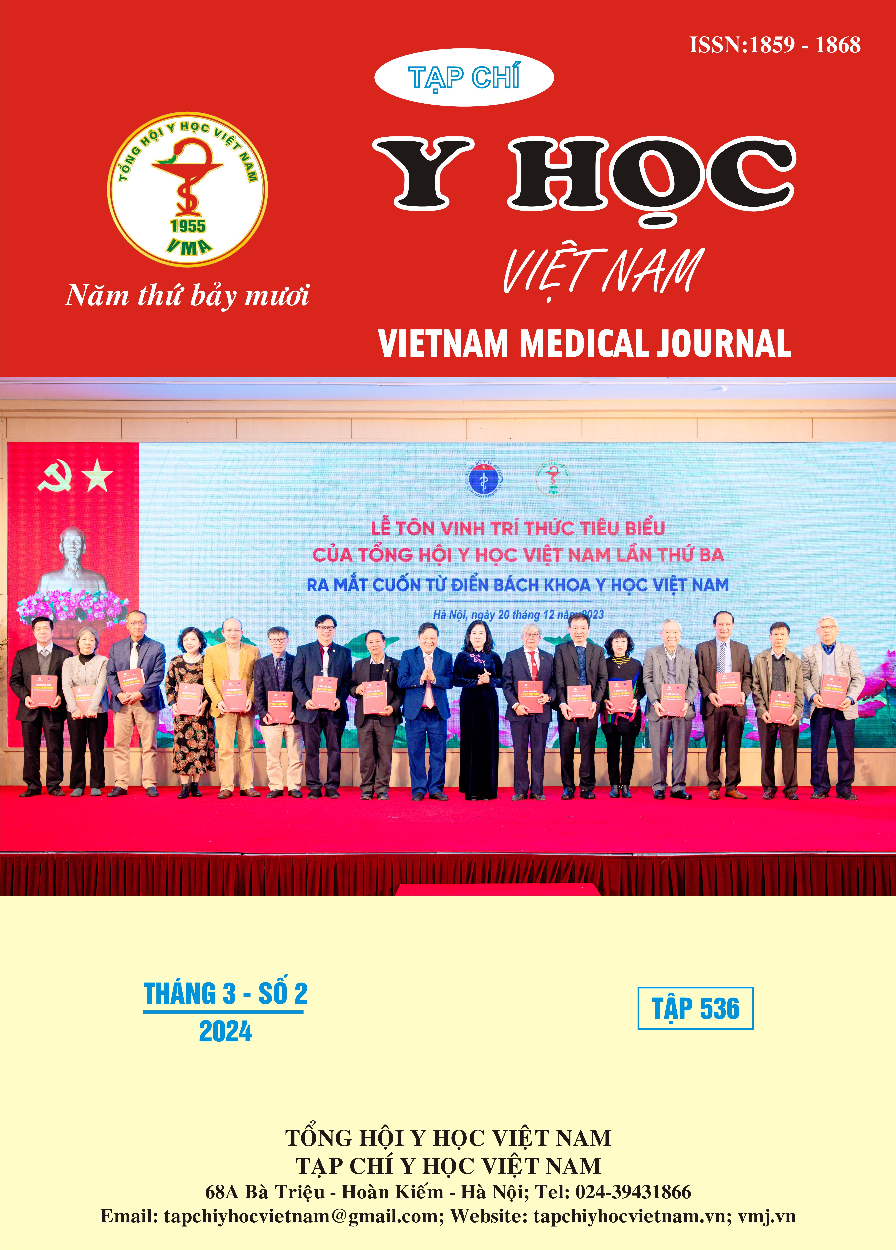TREND OF ANTIBIOTIC RESISTANCE OF ACINOBACTER BAUMANII CAUSING DISEASE AT NGUYEN TRI PHUONG HOSPITAL: LABORATORY SURVEY IN THE PERIOD OF 2020 - 2023
Main Article Content
Abstract
Introduction: Antibiotic resistance of Gram-negative bacteria strains, especially Acinobacter baumanii is becoming increasingly serious in health care facilities. The understanding of antimicrobial resistance of A. baumanii supports the treatment of bacterial infections and the management of antibiotic used in hospitals. Objectives: To characterize the distribution and trend of antibiotic resistance in laboratories of pathogenic A. baumanii strains at Nguyen Tri Phuong Hospital in the period of 2020 – 2023. Subjects and methods: case-series study on 1496 specimens with A. baumanii strains isolated from patients treated at Nguyen Tri Phuong Hospital from January 2020 to December 2023. Differences in antibiotic resistance tendencies are examined using Chi squared test. Results: samples isolated from internal medicine departments accounted for 54.1%. The most abundant specimen was fluid from the lower respiratory tract (74.1%). After four years, A. baumanii was still completely susceptible to colistin, 42.2% resistant to doxycycline, the rest of the antibiotics had very high resistance rates, from 70% to over 90%. The trend of antibiotic resistance of A. baumanii increased statistically significant (p < 0.05) with 9/14 antibiotics tested. Trend of antibiotic resistance in each clinical department group is similar to the model of the whole hospital, in which the ICU has the highest resistance rate. Conclusions: A. baumanii is also 100% sensitive to Colistin, but very resistant to most antibiotics tested and the trend increases year by year. ICU has the highest rate of resistance among departments.
Article Details
References
2. Ayoub Moubareck, Carole and Dalal Hammoudi Halat (2020). Insights into Acinetobacter baumannii: A Review of Microbiological, Virulence, and Resistance Traits in a Threatening Nosocomial Pathogen. Antibiotics 9:119. DOI:10.3390/antibiotics9030119
3. Đường Thị Hồng Diệp, Cao Thị Phụng (2022). Sự lưu hành các chủng kháng Acinobacter baumanii carbapenem tại Bệnh viện Đại học Y Dược TP. Hồ Chí Minh. Tạp chí Y học Việt Nam; 521(1):118-122.
4. Bùi Trí Cường, Nguyễn Văn Trọng, Nguyễn Đăng Mạnh (2019). Tỷ lệ phân lập được và đặc điểm kháng kháng sinh của Acinobacter baumanii tại Bệnh viện Trung ương Quân đội 108 năm 2017. Tạp chí Y Dược học lâm sàng 108; 14(3):114-119
5. Phan Trần Xuân Quyên, Võ Phạm Minh Thư (2020). Đặc điểm lâm sàng, cận lâm sàng, sự đề kháng kháng sinh và kết quả điều trị viêm phổi bệnh viện do vi khuẩn Acinobacter baumanii tại Khoa Hồi sức tích cực – chống độc Bệnh viện Đa khoa Trung ương Cần Thơ. Tạp chí Y Dược học CầnThơ; 30:7-14.
6. Phạm Hồng Thuý, Nguyễn Ngọc Quý và cộng sự (2023). Tình hình sử dụng kháng sinh trong điều trị viêm phổi do Acinobacter baumanii tại Bệnh viện Nhân dân Gia Định. Tạp chí Y học Việt Nam; 528(Chuyên đề):143-152
7. Elham B, Fawzia A. Colistin resistance in Acinetobacter baumannii isolated from critically ill patients: clinical characteristics, antimicrobial susceptibility and outcome. Afr Health Sci. 2019 Sep;19(3):2400-2406. doi: 10.4314/ahs.v19i3.13.
8. Dương Hữu Phước, Trương Thiên Phú, và cộng sự (2021). Hiệu quả in vitro phối hợp colistin với minocycline và colistin với doxycycline trên vi khuẩn Acinetobacter baumannii đa kháng. Tạp chí Y Học Việt Nam, 508(1):344-346. https://doi.org/10.51298/vmj.v508i1.1574


